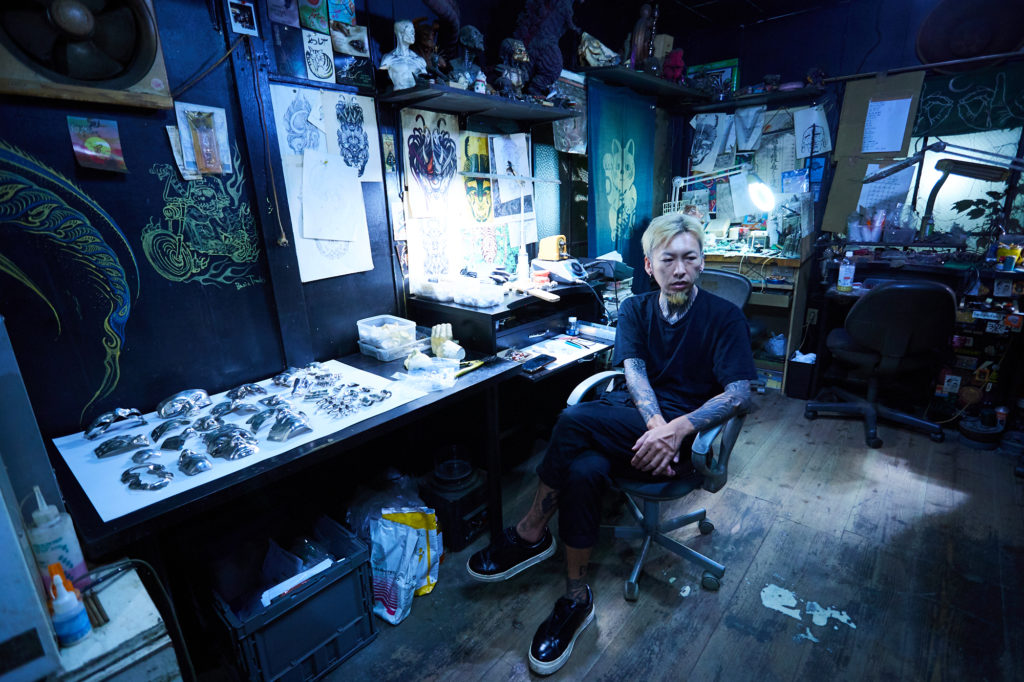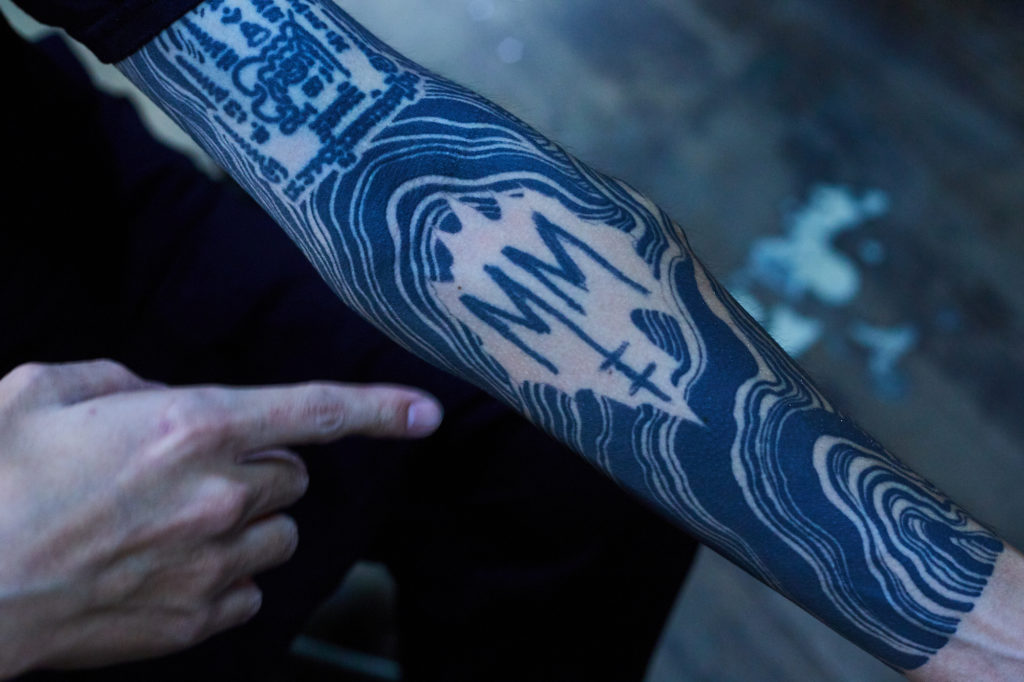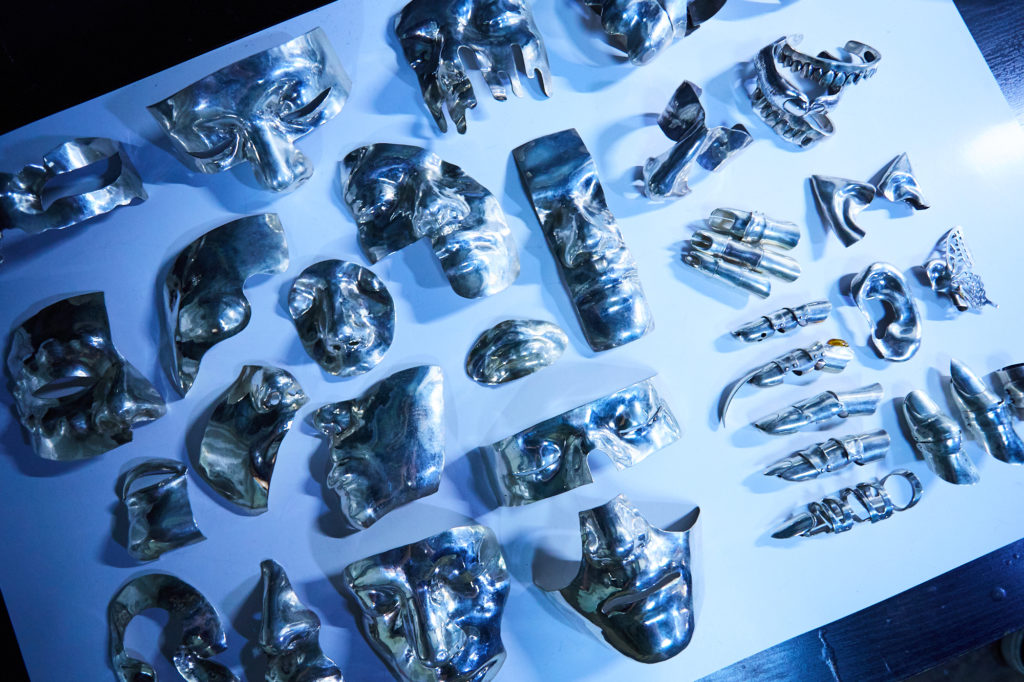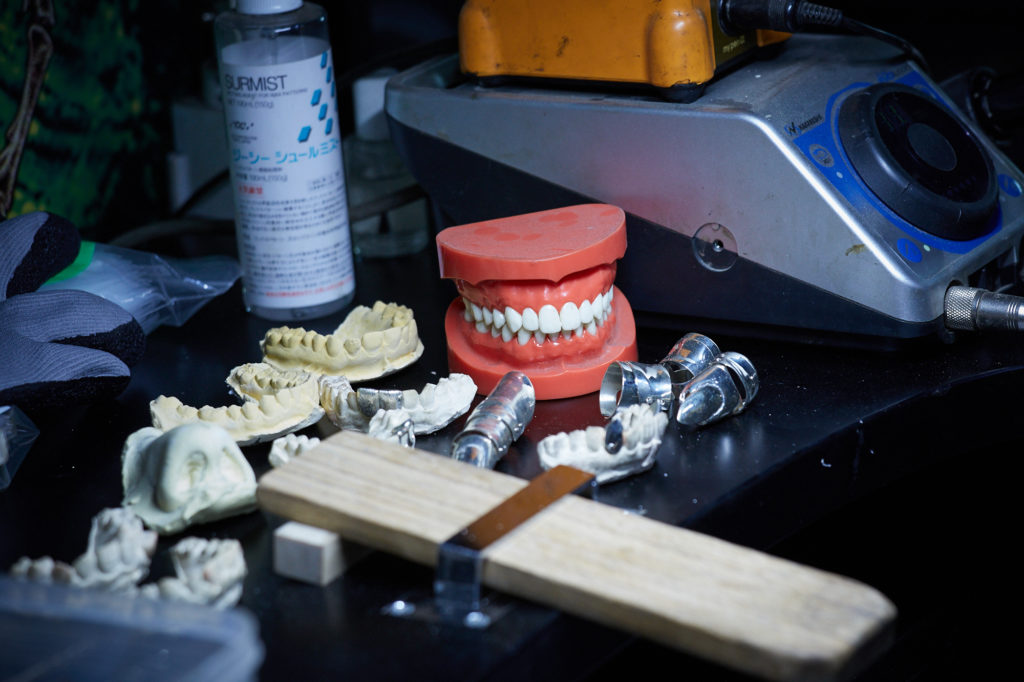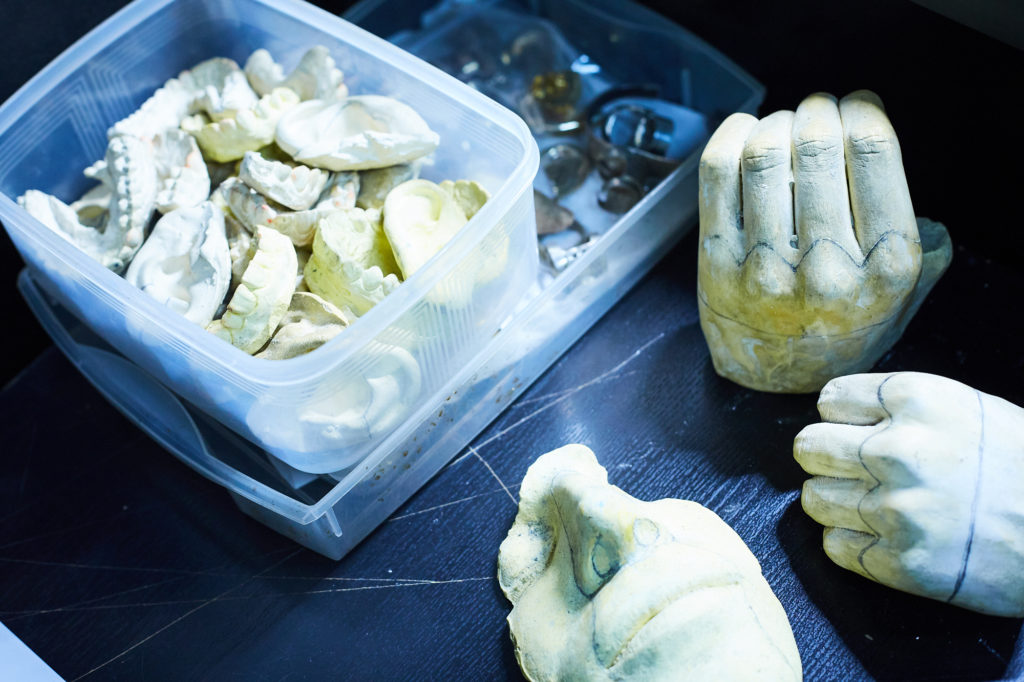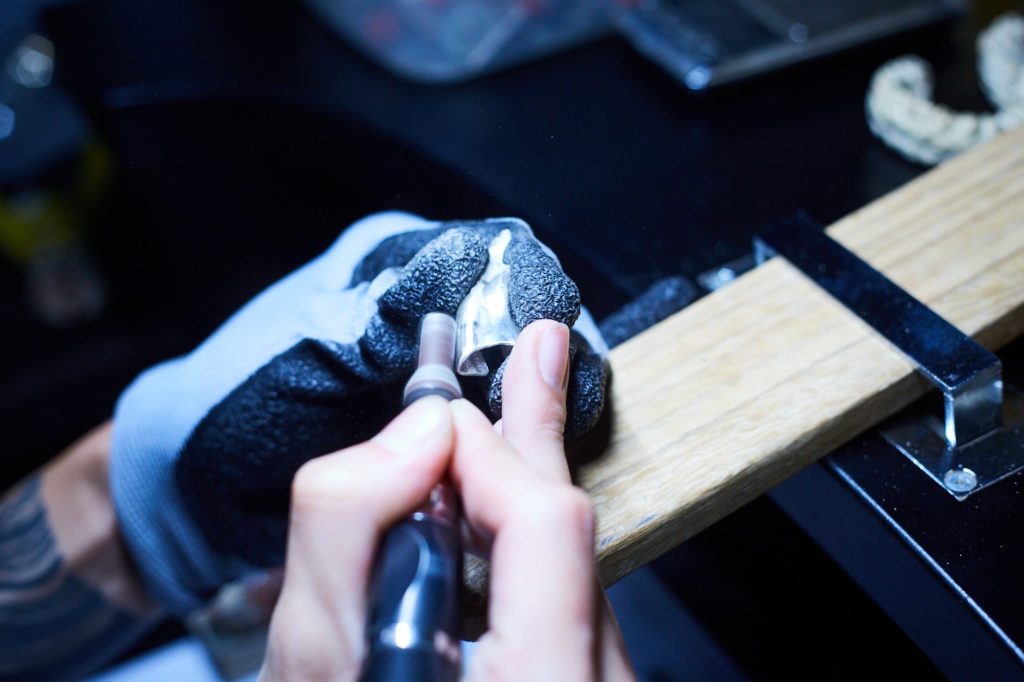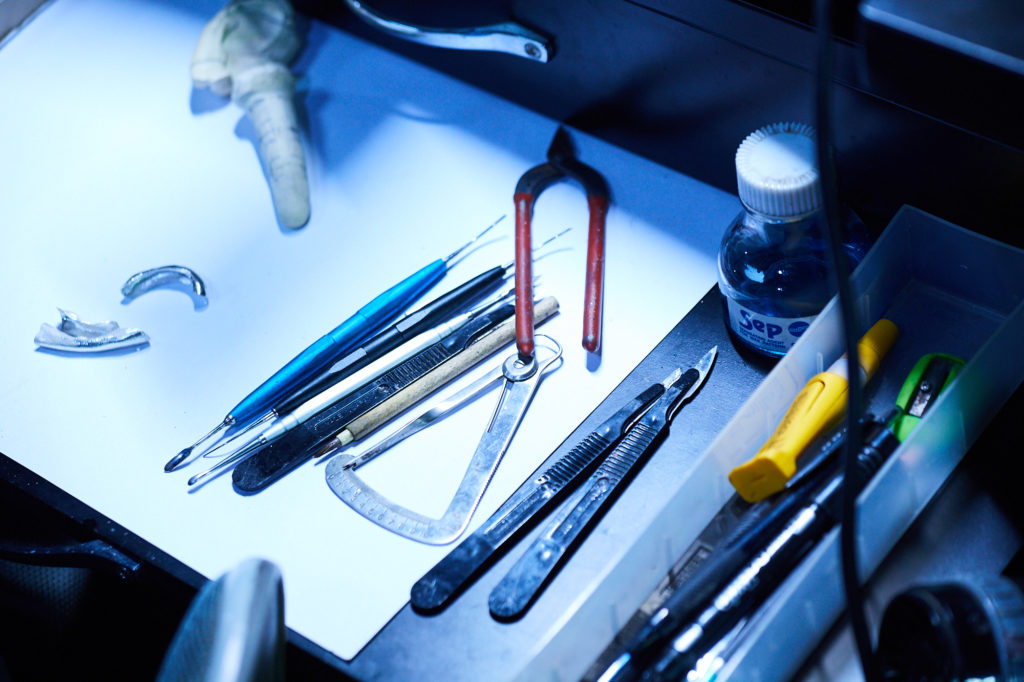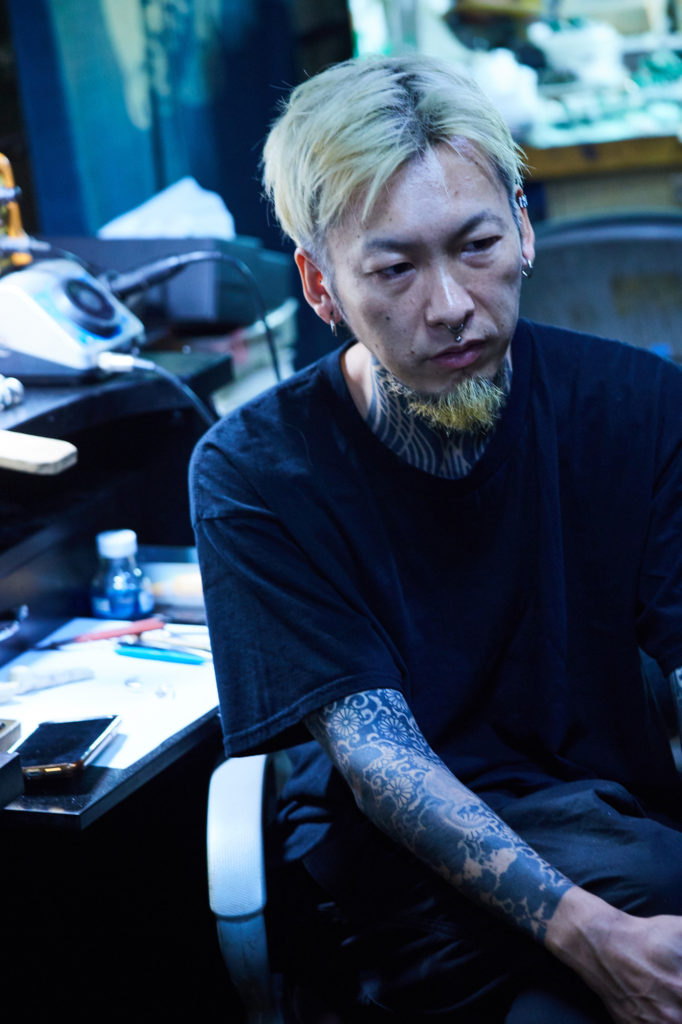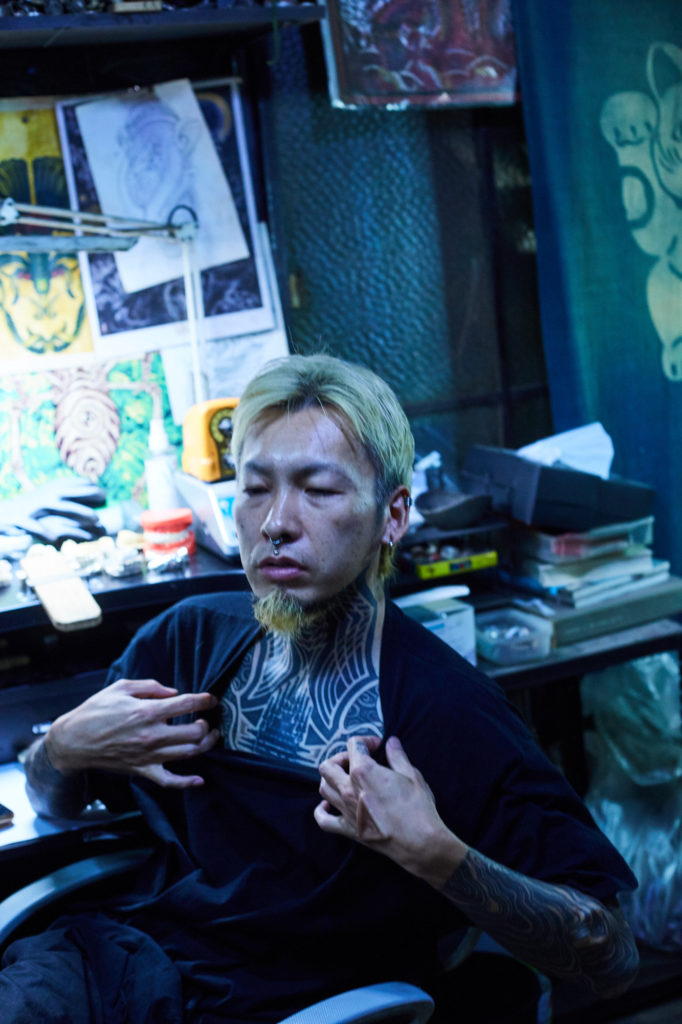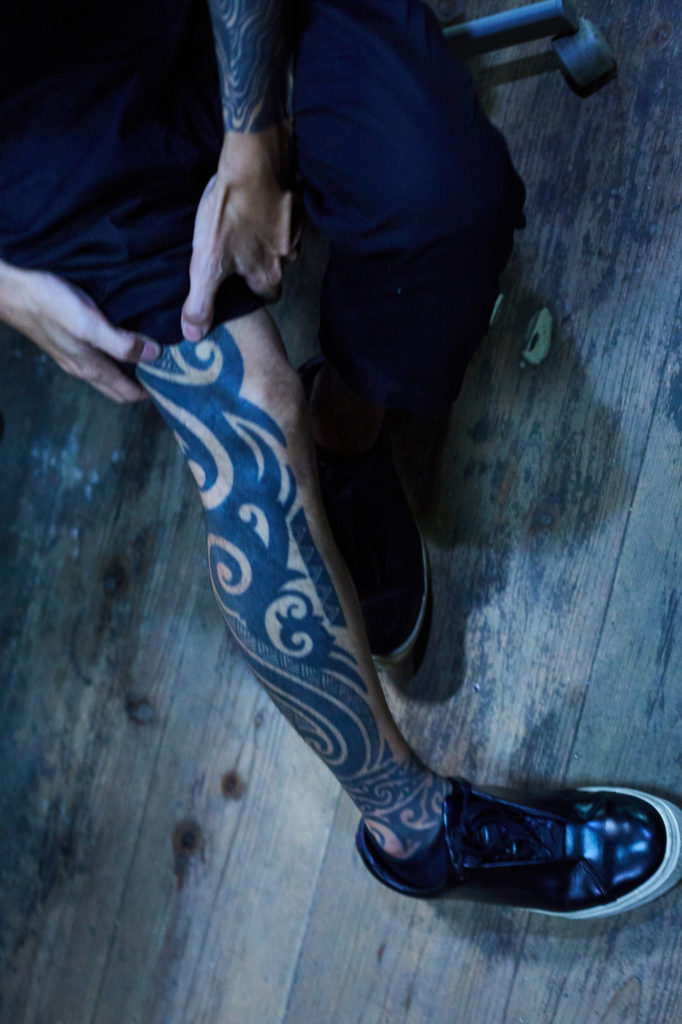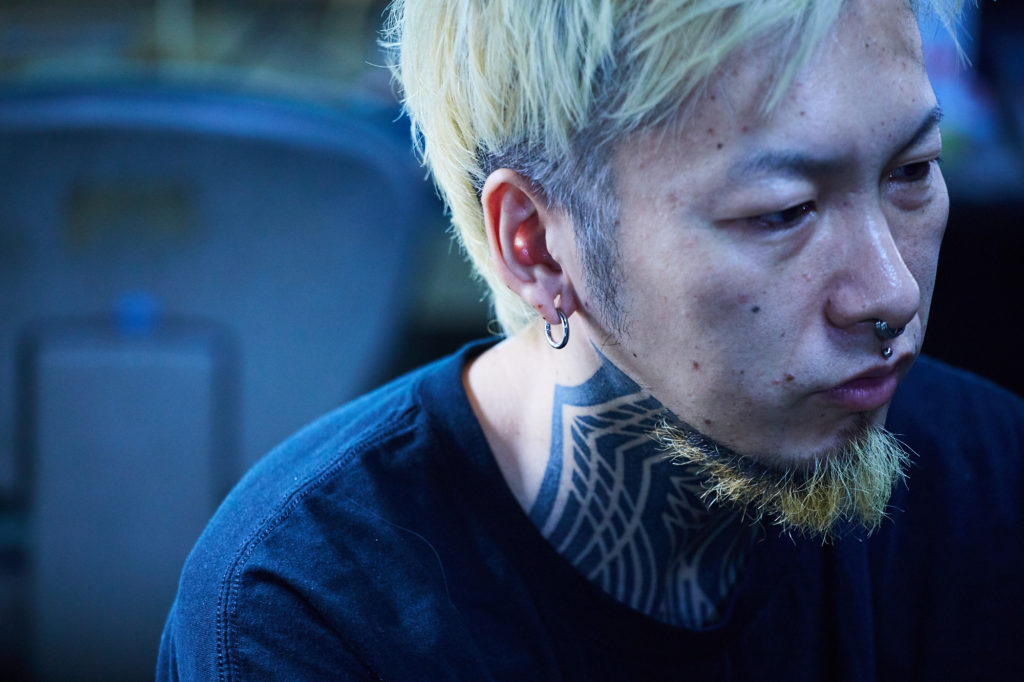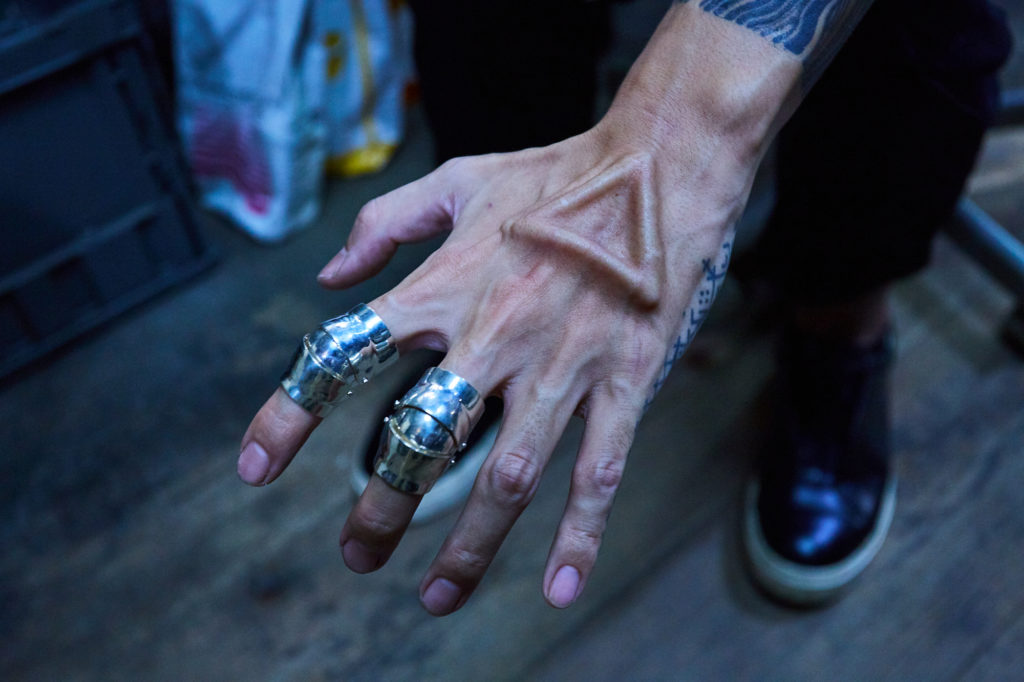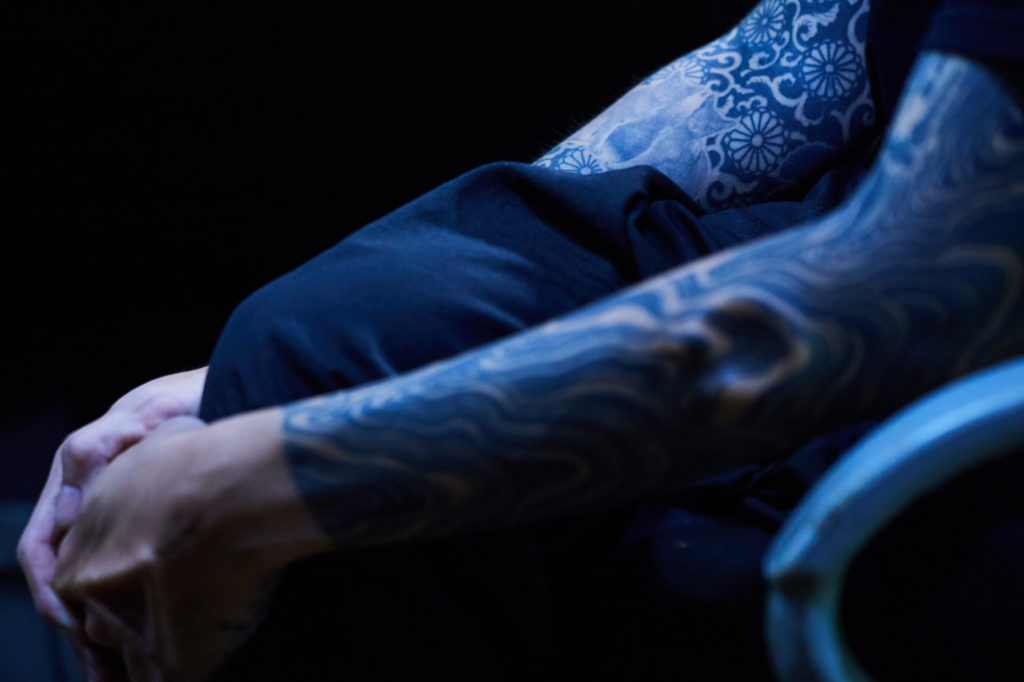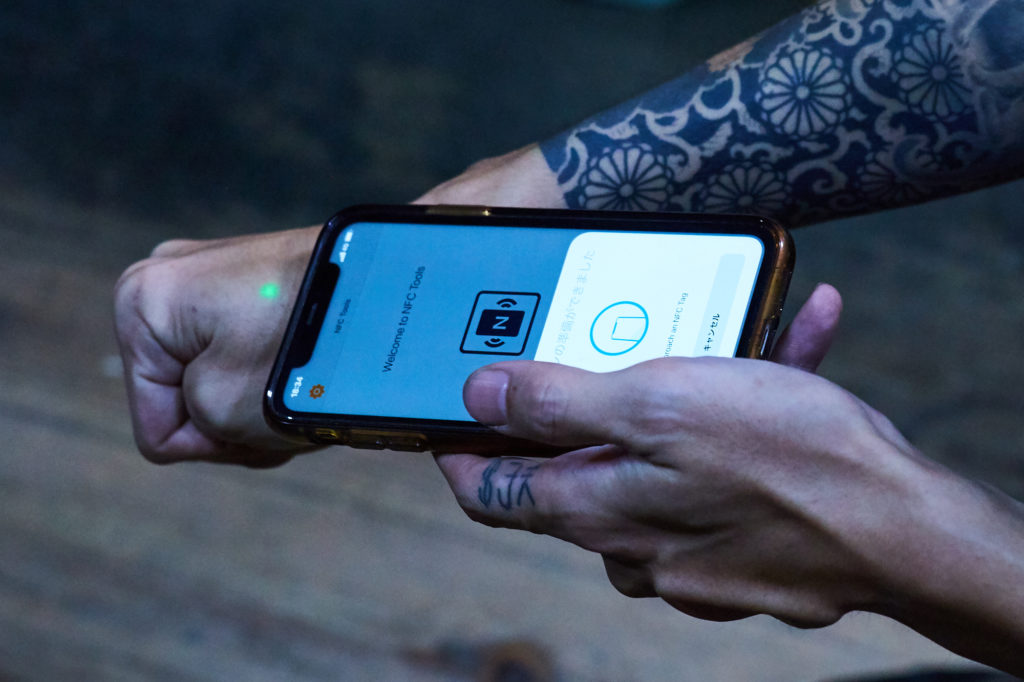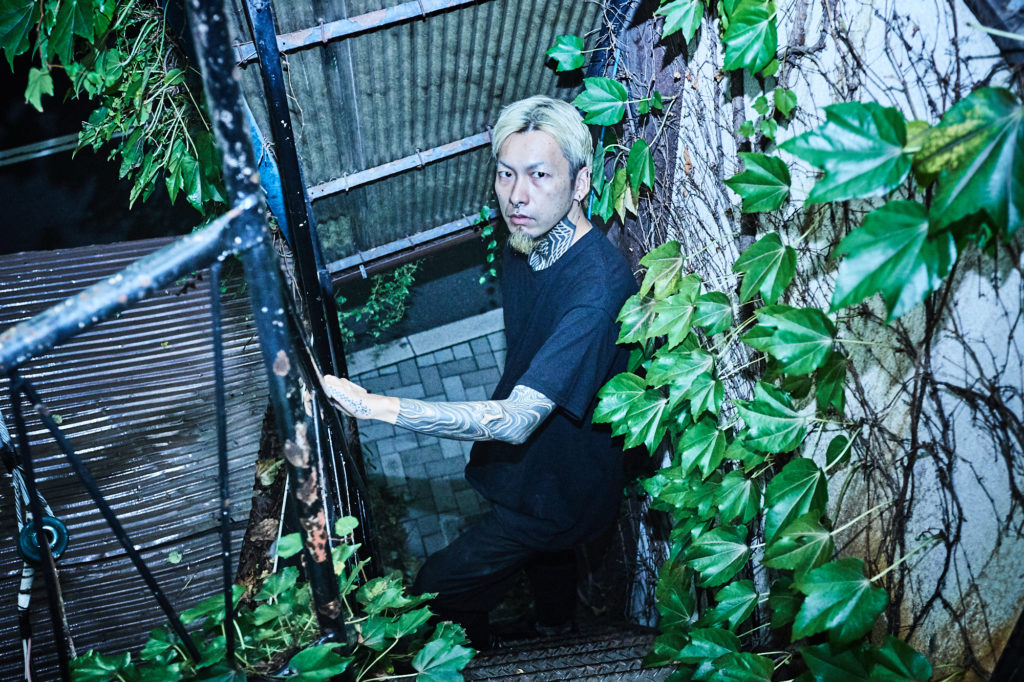
“fangophilia” is a silver accessory brand supported by world-famous artists such as Marilyn Manson, G-Dragon and Jaden Smith. Despite being a Japanee brand, most of its customers are from overseas. Brand designer and former dentist Tarou Hanabusa started manufacturing custom silver accessories by making use of molding and metal processing techniques used in dental treatment. Currently, he owns an atelier in Katsushika-Ku, located in Tokyo’s east side, where he manufactures his products. In this interview, we ask Hanabusa to share his secrets about the beginning of his brand and his popularity overseas.
——It seems that, originally, you graduated from the Faculty of Dentistry at Tohoku University, and after that, you worked as a dentist. Can you tell us how you started your silver accessory brand “fangophilia” from there?
Tarou Hanabusa: When I was a high school student, I had this loose thought that “entering a good university and getting a good job” was the way to success, so I was aiming to become a doctor. However, the Faculty of Medicine of most national universities was too hard to get in, so I entered the Faculty of Dentistry at Tohoku University. I attended university for six years and worked as a medical intern after graduating; it took about eight years to be able to work as a dentist. After that, I moved to Tokyo and started working as a dentist at a regular dental clinic at first. I worked there for about three years, and gradually realized that it didn’t fit my lifestyle.
Since university, I’ve always liked two things: one is body modification, especially tattoos and piercings. At the time, I used to read the magazine “BURST” which I loved and admired. The other one is traveling abroad; when I was a student, I used to go backpacking, and that experience shook my values, which I always thought were absolute until then, and I started thinking about stuff like what is happiness and such. So, if I hadn’t been a backpacker when I was in university, I would probably still be a normal dentist.
With such thoughts and feelings, I was working as a dentist, and obviously, I couldn’t go travel abroad or get into body modification freely, so it became stressful. I was thinking about what kind of job would let me travel abroad and do body modification as much as I want, and that’s when I found out about rappers overseas wearing jewelry on their teeth; since I was a dentist, I thought I could do that too, so I actually started making teeth molds and made silver accessories. Some people were already making such things overseas, but there were still only a few of them in Japan, and I thought that if someone with a dentist qualification like me would do it, it’d be better and it could get some attention. That was in 2011. So rather than for the love of accessories, I started doing it to follow my own lifestyle.
My encounter with Marilyn Manson became a big opportunity
——That’s when you started making silver accessories on your own.
Hanabusa: At first, it was really just a hobby, and I didn’t know if I could earn a livelihood with it, so I worked as a dentist about three days a week while making jewelry. In the beginning, I was only making teeth accessories, but since I was making molds, I realized I could make molds of fingers and faces too, so I started doing that, and my repertoire gradually expanded. The original idea was to make something interesting, whether it sold or not. With time, artists started using my accessories for photo and video shoots, but I couldn’t live off of them.
——By the way, where does the brand name “fangophilia” come from?
Hanabusa: it’s a made-up word that combines “fang” and “Philip” which means love. I chose this name randomly; I didn’t expect it to grow to this point. I wanted to change it at some point, but many people from overseas praised me for it, so if no one thinks it’s lame, I’ll just keep using it.
——When did it actually start getting on track?
Hanabusa: I would say two or three years after I started. At the time, Harajuku’s “DOG” was selling my products, which Lady Gaga saw when she visited the store; she liked the nose, ears and other accessories, which she showcased on her Instagram. Because of that, the brand became a little bit more popular overseas. After that, I went abroad and started receiving orders.
Six years ago, I went to LA to hold an exhibition, and that’s when, out of the blue, Marilyn Manson sent me a message on Instagram saying he was interested and wanted to meet at X place on X day. I was doubtful whether it was actually him, but I still went to the appointment, and it ended up being him; he also ordered a lot of accessories right on the spot. I actually took molds of his teeth, nose and fingers right there, but I was pretty nervous (laughs). By the way, I got Manson to draw a tattoo on me.
At the time, he told me that we were at a close friend’s house, which ended up being Johnny Depp’s. It’s really unbelievable, but I had the miraculous experience of meeting Marilyn Manson for the first time at Johnny Depp’s house. Such things can’t happen in Japan, but in LA, I was able to connect with world-class stars with a little luck and realized America’s potential.
Manson showcased my products on his Instagram, and from then on, I started getting recognition from more and more people. I got orders from world-famous artists such as G-Dragon and Jaden Smith, and since I actually had to take their molds, I got to meet with many celebrities. Personality-wise, I like to meet people, so it was a lot of fun to be able to meet with people I normally couldn’t. After that, I finally quit my job as a dentist and was able to make a living with my accessories.
——What a miraculous development! By the way, which parts are popular right now?
Hanabusa: I would say the teeth since they’re the most recognized. There are many tooth accessory brands though, and “fangophilia” caught on because I also manufacture custom body parts other than teeth, such as faces, ears and fingers. People who understand that will order ears or fingers too. Face masks are sometimes requested, but they’re usually worn for shootings.
——Do you have many customers from overseas?
Hanabusa: I have nearly 100,000 followers on Instagram, and the gender ratio between is 50/50; only about 3% of those people are Japanese customers. I think that many of my followers don’t know that it’s a Japanese brand. Actually, for the past five years, I’ve been spending half of my time abroad. My brand is very popular in America, Europe, Singapore, Thailand, Hong Kong and Taiwan. I haven’t been able to enter the Chinese market, since it’s hard without outside help, but that’s my goal for next year.
——Due to the pandemic, it’s harder to travel overseas; is your business getting tougher because of that?
Hanabusa: I can’t take orders without meeting with my customers, so there was some damage income-wise. However, recently I’ve started making ready-made products. Although the number of models is still small, I’ve been able to develop a wider range of sizes to some extent, so it’s gradually become possible to wholesale and sell through the web. As a sort of a second line, right now I’m making five, six new designs, and I’m thinking of developing about ten designs in total. Considering the future, I think that this was a good opportunity to review my work so far, as I took advantage of the current situation and started to work on ready-made products.
The tattoos all over my body are a sign of my emotional bonds
——You have tattoos all over your body, including the one by Marilyn Manson we were talking about before.
Hanabusa: I haven’t got any on my back; I’m saving it for the end. My tattoos are drawn by famous artists from all over the world. I had the opportunity to meet such tattoo artists not as a customer, but as an artist, as equals, which made me happy. By making accessories that I love, I also got the support from tattoo lovers and was able to connect with my beloved tattoo community. In a way, I guess my tattoos are a sign of my emotional bonds with such people. I wasn’t aiming for that from the beginning either; it was all a result of overlapping coincidences.
——By the way, which artists drew your tattoos?
Hanabusa: They’re all from different people: the one in the chest and right sleeve are from Nissaco, apart from the cat on the right arm which is from Kat Von D. The the left sleeve is from GAKKIN, while the tattoo on my neck is from Lewisink. I usually leave the design up to them. Also, I got a one-point tattoo from GAKKIN’s daughter NOKO on my left leg .
——You also have body modification implants.
Hanabusa: Many people ask why I put implants in my body, but there is no special reason (laughs). I guess I do it because I want to. Recently, I’ve implanted a microchip in my hand: this chip can store a small amount of data, and apparently, it’s good for storing highly confidential data, but right now I don’t really have such data, so I just have a chip in my hand.
Eventually, I’d like to implant a transportation IC card chip like Suica in my hand and become Japan’s first person with a built-in Suica. Actually, we’ve been working on how to incorporate it into the body with overseas manufacturers.
——I’d love to see that happen. Lastly, please tell us about your plans for the future
Hanabusa: In the future, I’d like to have a good balance between custom and ready-made products. If I can seel more ready-made products, I’ll have more time to make new ones. In a sense, I want to go back to my beginnings, or rather, make something weird that no one has ever made.
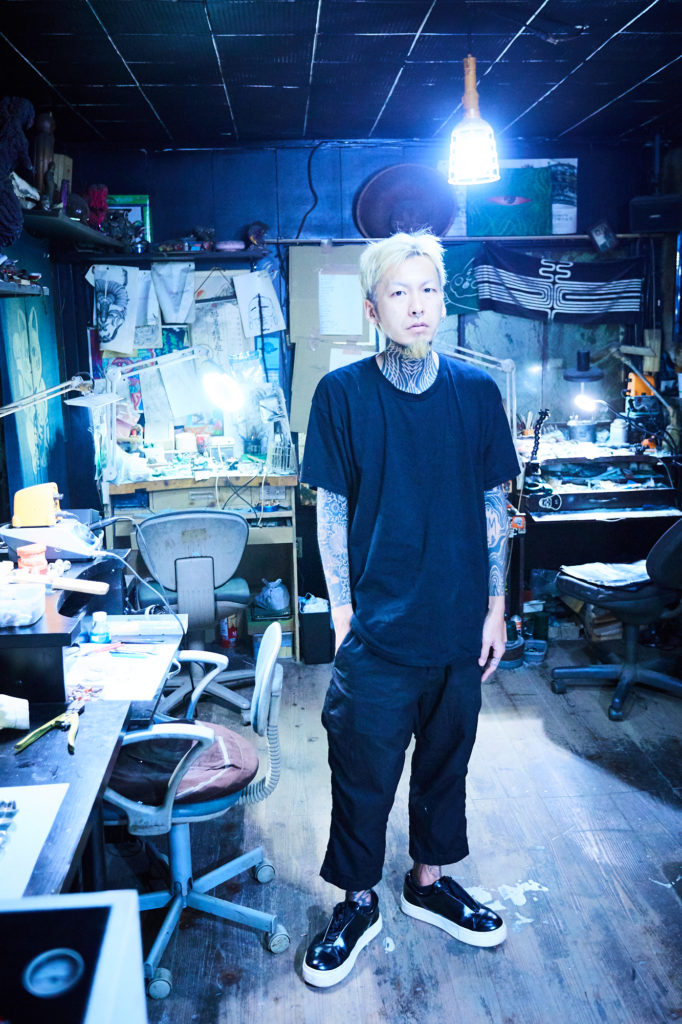
Tarou Hanabusa
Born in 1980, Hanabusa graduated from the Faculty of Dentistry at Tohoku University and obtained his dentist license. While working as a dentist, he started manufacturing silver accessories by making use of molding and metal processing techniques used in dental treatment.
http://fangophilia.com
Instagram:@fangophilia
Photography Kazuo Yoshida
Translation Leandro Di Rosa

